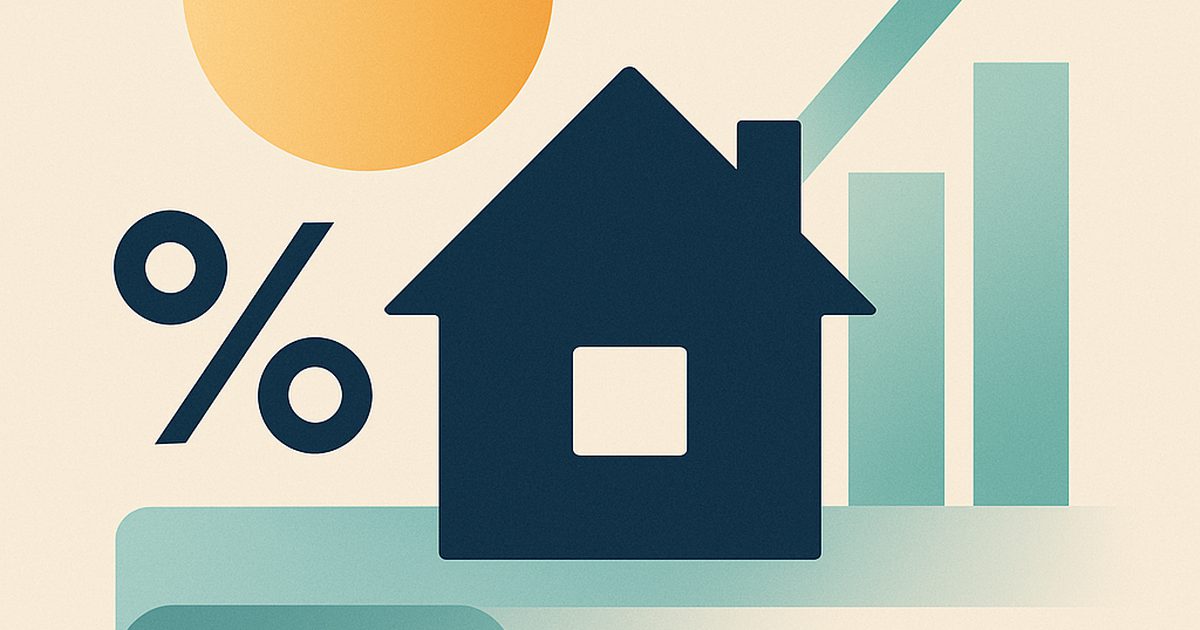TL;DR
- Low‑doc and no‑doc loans are niche mortgage products mainly offered by non‑bank lenders.
- They target self‑employed borrowers, freelancers and small‑business owners who struggle to provide traditional income documents.
- Interest rates are higher, deposits larger and postcode restrictions may apply.
- ASIC regulates these products, enforcing responsible‑lending checks and income verification through alternative means.
- The market has tightened since the 2010s, but products still exist—especially from lenders such as Pepper Money.
1. What Are Low‑Doc and No‑Doc Loans?
Low‑doc (low‑documentation) and no‑doc (no‑documentation) loans are specialised home‑loan products that relax the conventional requirement for a full set of income evidence such as payslips, tax returns and bank statements. Instead, borrowers may provide alternative proof of earnings – for example, recent Business Activity Statements (BAS), bank statements, or an accountant’s declaration – to satisfy the lender’s income‑verification criteria [3].
The “no‑doc” label is the most extreme form, where a borrower may supply no formal income documentation at all, relying instead on other risk‑assessment tools such as credit history and business performance.
2. Who Can Benefit?
These products were originally created for self‑employed individuals, freelancers and small‑business owners who find it difficult to meet the strict documentation requirements of a standard mortgage.
- Self‑employed professionals (e.g., graphic designers, consultants) who receive irregular income.
- Small‑business owners whose earnings are recorded in cash‑based accounting systems.
- Freelancers or gig‑economy workers who lack a regular payroll.
Because the income evidence is less conventional, lenders often require a larger deposit – sometimes up to 40 % of the purchase price – to offset the perceived higher risk [5].
3. How Do Low‑Doc Loans Differ From Full‑Doc Loans?
| Feature | Full‑Doc Loan | Low‑Doc / No‑Doc Loan |
|---|---|---|
| Income Documentation | Payslips, tax returns, bank statements, employment contracts | BAS, bank statements, accountant’s declaration, sometimes no formal documents |
| Deposit Requirement | 5–10 % (varies by LVR) | 20–40 % (often higher) |
| Interest Rate | Lower (market‑competitive) | Higher (interest‑rate premium) |
| LMI (Lender‑Insurance) | Waived below 60 % LVR; applied above 60 % | Often required at higher LVRs; premiums can be significant |
| Approval Speed | Moderate (depends on documentation) | Faster in theory, but subject to rigorous alternative‑income checks |
| Regulatory Scrutiny | Standard ASIC guidelines | Same ASIC guidelines, but with tighter income‑verification protocols |
The higher costs reflect the lender’s assessment that the borrower presents a higher default risk due to the absence of standard income evidence [5].
4. Regulatory Landscape
The Australian Securities and Investments Commission (ASIC) oversees all credit providers, ensuring responsible lending and consumer protection. In the 2010s ASIC tightened guidelines for low‑doc products, requiring:
- Rigorous income verification using alternative documents.
- Reasonable inquiries into a borrower’s financial situation.
- Suitability checks to confirm the loan matches the borrower’s needs and capacity.
These measures were introduced to curb predatory lending and protect borrowers who might otherwise be offered loans without adequate assessment [1,6].
Because of these stricter rules, many traditional banks withdrew low‑doc products, leaving non‑bank lenders as the primary providers of these loans.
5. How to Apply: A Step‑by‑Step Guide
5.1 Gather Your Alternative Documents
| Document | Purpose | Typical Source |
|---|---|---|
| Business Activity Statements (BAS) | Shows recent business activity and turnover | Australian Taxation Office |
| Bank Statements (last 6–12 months) | Demonstrates cash flow and deposits | Your bank |
| Accountant’s Declaration | Provides professional confirmation of income | Certified accountant |
| Profit & Loss Statement | Summarises revenue and expenses | Your accounting software |
5.2 Choose the Right Lender
- Banks: Most major banks have phased out low‑doc products, but some still offer them under strict conditions.
- Non‑bank lenders: Pepper Money, for example, offers an “Alt‑Doc” product that accepts reduced paperwork for eligible borrowers [7].
- Specialist mortgage brokers: They can compare multiple lenders and find the best fit for your circumstances.
5.3 Submit a Pre‑Qualification
Provide a summary of your income, assets and liabilities. The lender will conduct a responsible‑lending assessment to determine whether a full application is viable.
5.4 Complete the Full Application
If pre‑qualified, you’ll need to submit the full documentation package. The lender will verify your income using the alternative documents and assess your creditworthiness.
5.5 Await Approval and Offer
Once approved, the lender will issue a formal loan offer detailing the interest rate, fees, LMI premiums (if applicable) and repayment terms.
6. Costs & Terms to Watch
| Cost/Term | What It Means | Typical Range |
|---|---|---|
| Interest Rate | Higher than full‑doc loans due to higher risk | 0.5–1 % above market rate |
| Deposit | Often 20–40 % of purchase price | 20–40 % |
| LMI Premium | Insurance covering the lender if you default | Roughly 0.55 % for 80 % LVR on a $300k loan; rises to 0.98 % for $1m loan at same LVR [4] |
| Fees | Application, appraisal, legal fees | Variable |
| Postcode Restrictions | Some lenders limit where the loan can be used | Varies by lender |
Because of the higher interest and deposit requirements, borrowers should calculate the total cost of ownership over the loan term, not just the headline rate.
7. Risks & Considerations
| Risk | Mitigation |
|---|---|
| Higher Interest & Fees | Shop around, negotiate, and consider fixed vs variable rates. |
| Deposit Pressure | Ensure you have sufficient savings and avoid over‑leveraging. |
| Limited LVR | Lenders may cap LVR at 80 % or lower, affecting property choice. |
| Postcode Limits | Verify that the lender allows loans in your desired area. |
| Regulatory Changes | Stay informed of ASIC updates that could alter eligibility or costs. |
8. Choosing the Right Lender
| Lender Type | Pros | Cons |
|---|---|---|
| Major Banks | Strong brand, integrated services | Limited low‑doc options, stricter criteria |
| Non‑bank Lenders (e.g., Pepper Money) | Flexible documentation, specialized products | May charge higher fees, less integrated services |
| Mortgage Brokers | Access to multiple lenders, tailored advice | Broker fees, potential conflicts of interest |
If you’re a self‑employed borrower, a non‑bank lender that specialises in low‑doc products may offer the best balance of flexibility and cost. However, always compare the final offer, including all fees and LMI premiums.
9. Bottom Line
Low‑doc and no‑doc loans remain a viable option for Australians who lack the conventional income documentation required by standard mortgages. They offer a pathway to homeownership for self‑employed and small‑business borrowers, but they come with higher interest rates, larger deposits, and stricter regulatory oversight.
Key takeaways:
- Prepare alternative income evidence (BAS, bank statements, accountant’s declaration).
- Shop around – compare banks, non‑banks and brokers.
- Understand the full cost – interest, fees, LMI, and deposit.
- Stay compliant – ensure you meet ASIC’s responsible‑lending criteria.
By approaching the process with a clear understanding of the trade‑offs and by selecting a lender that specialises in low‑doc products, you can unlock faster credit while mitigating the inherent risks.
References
- Low-Doc and No-Doc Loans in Australia – Tech Guide — techguide.com.au — https://www.techguide.com.au/news/computers-news/low-doc-and-no-doc-loans-in-australia/
- What Are Low Doc Loans and Are They Still Available in Australia? — blog.financestory.com.au — https://blog.financestory.com.au/what-are-low-doc-loans-and-are-they-still-available-in-australia/
- Low Document Home Loans in Australia – Low Doc Mortgages — lowdocmortgages.com.au — https://lowdocmortgages.com.au/guide-to-low-document-home-loans-in-australia/
- Low Doc FAQ: Tips, Tricks & Secrets For Low Doc Loans — homeloanexperts.com.au — https://www.homeloanexperts.com.au/low-doc-loans/low-doc-faq/
- What is the difference between a full doc and a low-doc loan? | RateCity — ratecity.com.au — https://www.ratecity.com.au/home-loans/articles/difference-full-doc-low-doc-loan
- What Are Low Doc And Non-Conforming Loans In Australia? ← Track My Trail 💸️ — trackmytrail.com.au — https://trackmytrail.com.au/low-doc-non-conforming-loans-australia/
- Low Doc/Alt Doc Home Loan Options | Pepper Money — peppermoney.com.au — https://www.peppermoney.com.au/home-loans/low-doc-vs-alt-doc
- What Is A Low Doc Home Loan And How Does It Work? | Canstar — canstar.com.au — https://www.canstar.com.au/home-loans/low-doc-home-loans/



